Wat is de beste manier om batterijen op lange termijn op te slaan?
We hebben ze allemaal - die lade van diverse batterijen voor afstandsbedieningen, zaklampen, en speelgoed. Maar heb je je ooit afgevraagd wat de beste manier om ze op te slaan, is om ervoor te zorgen dat ze meegaan? Juiste batterijopslag is eenvoudig, en dezelfde principes zijn van toepassing, of u nu AA -batterijen opslaat of een krachtig energiesysteem voor thuis.
De beste manier om de meeste batterijen op de lange termijn op te slaan, is cool, droge plaats, in hun oorspronkelijke verpakking of een behuizing zodat hun terminals niet kunnen aanraken. Voor oplaadbare lithium-ionbatterijen, Het is ook cruciaal om ze op te slaan tegen een gedeeltelijke lading (rondom 40-60%). Voor een groot energiesysteem voor thuis, De ultieme opslagoplossing is een professional, ingesloten systeem als een aan de muur gemonteerde batterij, die al deze voorwaarden voor u beheert.
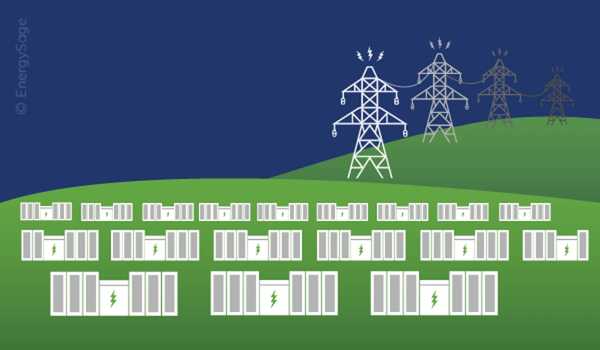
Bij Gycx Solar, We zijn experts in energieopslag op grotere schaal, Maar de fundamentele principes van batterijverzorging zijn universeel. Laten we enkele veel voorkomende vragen onderzoeken over het opslaan van batterijen om hun veiligheid en levensduur te maximaliseren.
Hoe lang kan een nieuwe batterij ongebruikt zitten?
Je vindt een ongeopende pakket batterijen die je een tijdje geleden hebt gekocht. Zijn ze nog steeds goed? Hoe lang een nieuwe batterij op een plank kan zitten en effectief kan blijven, hangt volledig af van zijn chemie.
Een nieuw, standaard alkalische batterij (Als een AA of AAA) heeft een uitstekende houdbaarheid van 5 naar 10 jaren. EEN Primaire lithiumbatterij (Als een CR2032 -muntcel) kan nog langer meegaan, vaak 10 naar 20 jaren. Modern Oplaadbare lithium-ionbatterijen (LFP of NMC) Bewaar ook heel goed, Alleen verliezen 1-3% van hun kosten per maand, en kan jaren worden opgeslagen als ze onder de juiste omstandigheden worden gehouden (Cool en gedeeltelijk opgeladen).
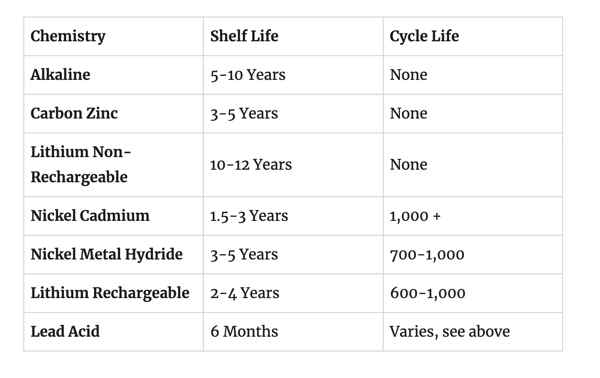
Duik dieper: Houd de houdbaarheid begrijpen
De houdbaarheid is een maat voor hoe lang een batterij ongebruikt kan zitten met behoud van het grootste deel van zijn oorspronkelijke capaciteit. Dit wordt bepaald door zijn interne "zelfontlading" tarief.
- Alkalische batterijen: Dit zijn de werkpaarden voor dingen zoals rookmelders en afstandsbedieningen, juist omdat ze een zeer lage zelfontladingssnelheid en een lange houdbaarheid hebben.
- Oplaadbare NIMH -batterijen: Deze oudere oplaadbare chemie heeft een veel hogere zelfontladingspercentage. Ze kunnen verliezen 15-20% van hun kosten in de eerste maand en kan bijna leeg zijn na een jaar opslag, waardoor ze minder ideaal zijn voor noodapparatuur.
- Oplaadbare lithium-ionbatterijen: De technologie die in alles wordt gebruikt, van uw telefoon tot onze muur gemonteerde batterij Opslagsystemen zijn uitstekend in het vasthouden van een lading. De zeer lage zelfontladingspercentage betekent dat het klaar is als je het nodig hebt, Of het nu een dag of meerdere maanden geleden is. De sleutel tot het behoud van zijn gezondheid op de lange termijn tijdens opslag gaat niet alleen over zelfontlading, maar ook over het opslaan van het op het juiste ladingsniveau, die we daarna zullen behandelen.
Do AA -batterijen uitlekken als ze niet in gebruik zijn?
Heb je ooit gloednieuwe AA-batterijen in een apparaat geplaatst?, Alleen om ze een jaar later dood te vinden, ook al heb je het nooit gebruikt? Verliezen ze de kracht gewoon in een la?
Ja, Alle batterijen, inclusief gewone AA -batterijen, Giet heel langzaam af als je niet wordt gebruikt. Dit geleidelijke stroomverlies is een natuurlijk chemisch proces dat wordt genoemd zelfontlading. Voor standaard alkalische AA -batterijen, Dit proces is extreem traag, Daarom hebben ze een houdbaarheid van vele jaren. Voor oplaadbare AA -batterijen (Zoals NIMH), De zelfontladingspercentage is veel sneller, Daarom moeten ze vaak worden opgeladen vlak voordat u ze gebruikt.
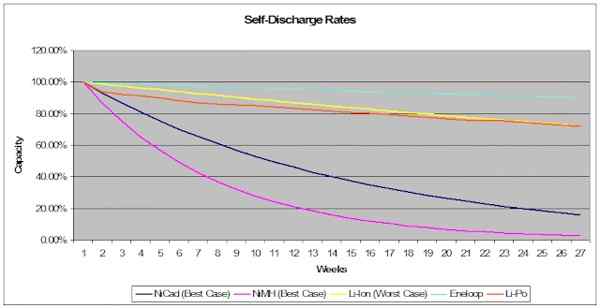
Duik dieper: De stille afvoer
Zelfontlading gebeurt vanwege langzaam, Ongewenste chemische reacties in de batterij die de opgeslagen energie verbruikt zonder dat een extern apparaat wordt aangesloten.
- Alkalische aas: Kan minder verliezen dan 2% van hun kosten per jaar. Dus, na 5 jaren, ze zouden nog steeds moeten hebben 90% van hun kracht.
- Oplaadbare nimh aas: Kan een aanzienlijk deel van hun lading verliezen in de eerste paar maanden. Dit maakt ze geweldig voor apparaten met een hoge draai die u vaak gebruikt (Zoals een videogamecontroller) Maar slecht voor low-drain, Langdurige apparaten (Als een zaklamp in noodgevallen).
- Verbinding maken met grote systemen: Hetzelfde principe is van toepassing op de opslag van huisenergie. Moderne lithium-ionsystemen hebben een zeer lage zelfontlading, Ze maken ze dagen of zelfs weken ongelooflijk effectief in het opslaan van zonne -energie met minimaal verlies. Oudere leadzuurbatterijtechnologieën hebben een veel hogere zelfontladingspercentage, in de loop van de tijd meer energie verspillen. Dit is een andere belangrijke reden waarom onze GYCX-zonnesystemen geavanceerde lithium-iontechnologie gebruiken.
Gaan batterijen slecht als ze niet worden gebruikt?
We weten dat batterijen langzaam weglopen, Maar kunnen ze eigenlijk "slecht worden" en word onbruikbaar door te lang op een plank te zitten, Zelfs als ze nooit zijn gebruikt?
Ja, Batterijen kunnen en worden na verloop van tijd slecht, Zelfs als ze niet worden gebruikt. Dit komt door twee belangrijke factoren: zelfontlading De spanning naar een schadelijk laag niveau laten vallen, en een proces dat wordt genoemd kalenderveroudering, waar de interne chemische componenten in de loop der jaren gewoon afbreken. De beste manier om dit verouderingsproces te vertragen, is door batterijen op te slaan in een koel, droge plaats, en voor lithium-iontypen, bij een Gedeeltelijke toestand van kosten.
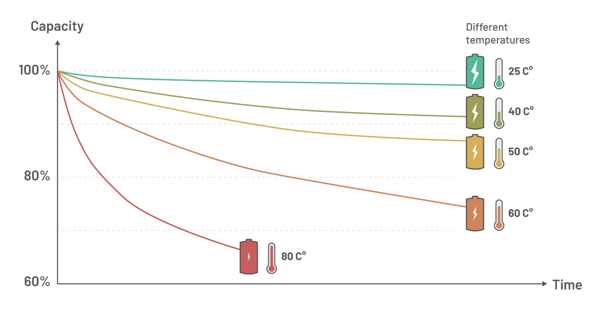
Duik dieper: De onvermijdelijke mars van tijd
Laten we eens kijken naar de twee manieren waarop een ongebruikte batterij slecht gaat:
- Schade door diepe zelfontlading: Als een batterij te lang zit, Zelfontlading kan zijn spanning aftappen onder een kritieke drempel. Voor oplaadbare lithium-ionbatterijen, Dit kan onomkeerbare schade aan de cellen veroorzaken, En de bescherming van de batterij GBS1. kan voorkomen dat het om veiligheidsredenen ooit opnieuw wordt opgeladen.
- Kalenderveroudering: Dit is het onvermijdelijke, Langzame afbraak van de interne componenten van de batterij. Het is een chemisch proces dat gebeurt of de batterij wordt gebruikt of niet. Echter, De snelheid van dit proces wordt sterk beïnvloed door de opslagomstandigheden.
- Warmte is de #1 Vijand: De meest effectieve manier om een batterij "slecht te maken" is snel om het ergens op te slaan. Warmte versnelt de agenda -veroudering drastisch. Een batterij opgeslagen op een hete zolder of auto kan slechts een fractie van de verwachte levensduur meegaan.
- Opslaglaadniveau (voor lithium-ion): Zoals we de volgende keer zullen zien, Een lithium-ionbatterij opslaan bij 100% Vol versnelt ook dit verouderingsproces.
Daarom ziet u "Use door" data op alkalische batterijen. Het is de schatting van de fabrikant van zijn gezonde houdbaarheid onder normale opslagomstandigheden.
Wat is de beste manier om batterijen thuis op te slaan?
Nu, Laten we het allemaal samenbrengen. Van de AA -batterijen in uw junk -lade tot een groot energiesysteem voor thuis, Wat is de veiligste en meest effectieve manier om ze thuis op te slaan?
Voor kleine huishoudelijke batterijen, De beste manier is om ze in hun te houden originele verpakking of een plastic kast (Om te voorkomen dat terminals aanraken) en bewaar ze in een koel, droge lade of kast. Voor een groot energiesysteem voor thuis, De beste manier is om een professioneel geïnstalleerde te gebruiken muur gemonteerde batterij eenheid. Een muur gemonteerde Bess is in wezen een perfecte, klimaatgestuurd, Veilige opslagoplossing voor de energie van uw huis.
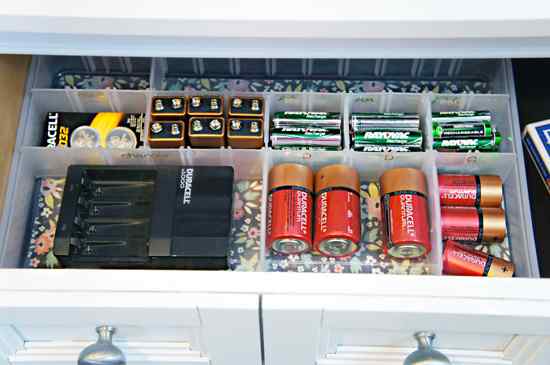
Duik dieper: Van de lade naar de muur
Laten we de principes op beide schalen toepassen:
- Kleine huishoudelijke batterijen (Aa, AAA, 9V, enz.):
- De gouden regel: Laat terminals niet aanraken! Dit is het grootste veiligheidsrisico. Een kortsluiting kan een brand veroorzaken. Houd ze in hun verpakking of bij speciale organisatoren van plastic batterijen. Bewaar ze nooit los in een lade met munten, sleutels, of andere metalen objecten.
- De beste locatie: Een temperatuurgestuurde lade in uw huis is perfect. Vermijd hete garages, Vochtige kelders, of plaatsen met fluctuerende temperaturen.
- Grote thuis energiesystemen (De professionele oplossing):
- Je kunt niet zomaar een 10kWh -batterij in een lade stoppen. U hebt een ontwikkelde opslagoplossing nodig, En dit is waar de muur gemonteerde batterij komt binnen. Een professionele muur gemonteerde Bess, zoals die GYCX Solar installeert, Biedt de ideale opslagomgeving door:
- Zorgen voor veiligheid: De robuuste behuizing beschermt de batterijen tegen fysieke schade en zorgt ervoor dat alle elektrische terminals veilig zijn opgenomen.
- Beheer van temperatuur: Het systeem is ontworpen voor een goede ventilatie om warmte af te voeren, welke, Zoals we hebben geleerd, is van cruciaal belang voor de levensduur van de batterij, Vooral in het Amerikaanse klimaat.
- Het handhaven van de ideale lading: Het geïntegreerde batterijbeheersysteem (GBS) houdt de batterijen automatisch in een gezonde toestand van lading, Klaar voor gebruik, het voorkomen van de schade die kan voortvloeien uit het opslaan van een batterij bij 0% of 100%.
- Ruimte besparen: Door verticaal op een muur te monteren, Het behoudt waardevolle vloerruimte.
- Je kunt niet zomaar een 10kWh -batterij in een lade stoppen. U hebt een ontwikkelde opslagoplossing nodig, En dit is waar de muur gemonteerde batterij komt binnen. Een professionele muur gemonteerde Bess, zoals die GYCX Solar installeert, Biedt de ideale opslagomgeving door:
GYCX Solar Story: "Wanneer we een batterij op de muur installeren voor een client, We geven ze niet alleen kracht; We geven ze een professioneel ontworpen opslagsysteem. We vinden de beste locatie in hun huis voor koelte en veiligheid, en de eenheid zelf behandelt de rest. Het haalt al het giswerk uit hoe je de energie van je huis veilig kunt 'opslaan'."
De beste manier om elke batterij op te slaan, is door hem koel te houden, droog, en veilig tegen kortsluiting. Voor lithium-ionbatterijen, Dit betekent ook dat ze een gedeeltelijke kosten voor langdurige opslag houden. Een moderne muur gemonteerde batterij Systeem is de ultieme uitdrukking van deze principes, het bieden van een beveiliging, beheerd, en ruimte-efficiënte oplossing voor de belangrijkste batterij van uw huis.
Als u vragen heeft over onze professionele opslagoplossingen voor batterijen en hoe zij een veilig en langdurig huis bieden voor uw energie, Ons expertteam bij GYCX Solar is er om te helpen. Neem contact met ons op voor een consult!
Inzicht in het concept van BMS zal u helpen om batterijgerelateerde gegevensconcepten beter te vergelijken en te begrijpen. Dit helpt u het product te selecteren dat het beste bij uw behoeften past bij ons bedrijf. ↩
